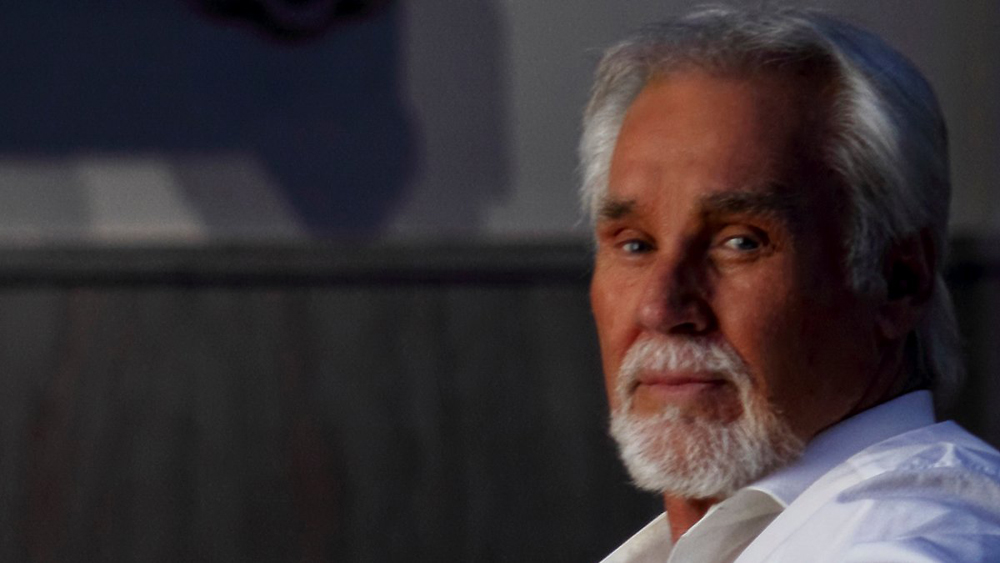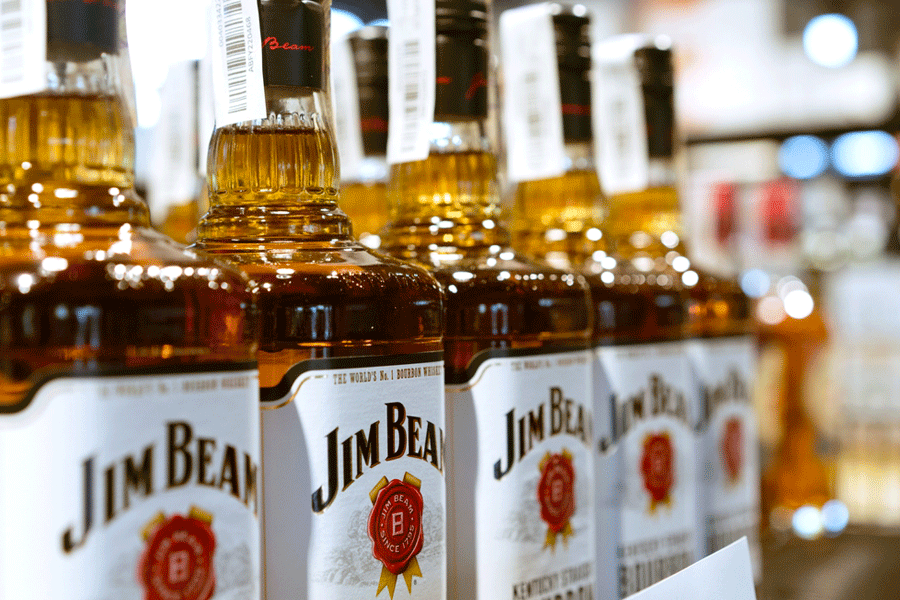His voice was genial, sympathetic and emotionally forthright. Kenny Rogers, who passed away last week, was the singer many turned to when falling in (or out of) love. Always recording songs he “believed in”, the man will be remembered for a number of reasons.
A love that lived on fax
She was rolling towards her 40s while he had already embraced midlife when the 1983 song Islands in the Stream fell into their laps. It was the perfect ode to middle-age love, brimming with possibilities and nestled by realism. Kenny first met Dolly Parton when his band First Edition appeared on her 1976 TV variety show, Dolly!. They were not friends but the next few years changed the equation. Credit goes to Barry Gibb, for it was the Bee Gees member who had suggested him to collaborate with the country diva. “And my manager said: ‘I just saw her downstairs.’ So I said: ‘Go get her and bring her back.’ So he brought her back in and once she came in, that song was never the same. She lit it up and we became good friends from that point on,” he had told Taste of Country. It was a friendship that lasted decades, to the point that she was by his side at his final stage performance in 2017.
But they were not a pair. “We just flirted with each other and loved every minute of it. I couldn’t wait to get onstage with her, and I always felt she felt that way about me. I knew her husband, Carl, and she knew my wife at the time. We both respected that, but boy did we have fun. And honestly, had we gone farther we would have lost the chemistry. The fact that we didn’t allow us to feel a little electricity without overusing it....” the man told Rolling Stone in 2014. In fact, a year earlier Rogers had said that he never even had her personal number and would contact her via fax.
Always changed gears
Like Leonard Cohen, he never sounded young and until the mid-1970s, success didn’t come to him in a big way. Among his early big numbers was the 1967 song Just Dropped In (To See What Condition My Condition Was In) with his group The First Edition. This was pop psychedelia and far removed from his later career-defining hits. What never changed was his love for taking up adult subjects. Like on the classic Lucille (1977), which bucked the trend on US radio. This was no ordinary romantic love ballad. The protagonist in the song picks up a woman at a Toledo bar, right in front of her husband, who sings the chorus: You picked a fine time to leave me, Lucille / With four hungry children and a crop in the field. They go to a motel but her ex’s words came back to him again and again. “The executives at United Artists Records thought I was too old, creeping up on 40, and too pop to have much success in country,” he wrote of his recording career before Lucille in his 2012 memoir, Luck or Something Like It.
A man of many parts
Written by Don Schlitz and first recorded by Bobby Bare of 500 Miles Away from Home fame, Kenny Rogers made the song The Gambler his own. He transformed his career with this track, laying the groundwork for a series of TV films in which he starred as Old West card player Brady Hawkes. Making the story-song strong is how the protagonist shares his lifelong wisdom while shuffling the cards. The 1978 song gave way to the well-received TV movie Kenny Rogers as The Gambler two years later. And it went on to spawn four sequels over 14 years.
Hawkes is a Wild West cards man who sets out to meet his son he never knew he had. Here was a man who knew how to hold ’em, fold ’em and then walk away. But acting was never his first love: “I never really wanted to be an actor. It’s like I told somebody the other day: ‘There are actors, and then there are people who can act.’ You give an actor unbelievable dialogue, and they can make it believable. If you give me believable dialogue, I can keep it believable. There are a lot of people who can’t do that,” he said in a 2011 interview with C&I.
Like acting, he also took interest in photography, resulting in two memorable volumes — Kenny Rogers’ America (1986), a selection of photos of national landmarks, and Your Friends and Mine (1987), a collection of portraits of fellow celebrities, like Elizabeth Taylor and Michael Jackson.
And the man was an equally successful entrepreneur, with his best-known enterprise being Kenny Rogers Roasters, a chain of chicken restaurants he opened with John Y. Brown Jr., the former governor of Kentucky and chief executive of Kentucky Fried Chicken.
Inspired by Ray Charles
Born Kenneth Donald Rogers, the fourth of eight children, he considered music to be his refuge since childhood. Though his dad struggled with alcohol, he made ends meet and was an amateur musician. “My dad wasn’t in the business but he played fiddle. All of his brothers and sisters played some instrument, so we used to get in the cab of a pickup truck and ride up to Apple Springs, Texas, where all my aunts and uncles would get on the front porch and play music. I used to sing in the church choir and at school but my interest actually started when I was 12 years old and went to see Ray Charles in concert. It was like an epiphany. People laughed at everything Ray said, they clapped for everything he sang. I thought, ‘Boy, who wouldn’t want to do that?’ I didn’t even know I could sing at the time. I just loved the honesty of his music,” he said in a 2014 interview with Rolling Stone. While in high school, he formed a doo-wop group called the Scholars and then came his successful band, The First Edition.
Our favourites
Just Dropped In (To See What Condition My Condition Was In) (1967)
After dabbling in doo-wop, jazz and folk music, Kenny Rogers made it to Top 10 as lead singer of The First Edition with this pop psychedelia.
Ruby, Don’t Take Your Love to Town (1969)
The First Edition goes country with a story-song in which the singer portrays a paralysed Vietnam veteran whose wife would prefer to spend time with other men. He pleads her to stay. She refuses. And he sings: If I could move I’d get my gun and put her in the ground. Chilling.
Lady (1980)
Penned by Lionel Richie, the sensual number blurred the line between country and R&B. His voice cracks up, just like the feelings the song portrays.
The Gambler (1978)
The song that gave Kenny Rogers an image and a career in films. An eternal truth is held up through Kenny smoothness: You never count your money when you’re sittin’ at the table. There’ll be time enough for countin’ when the dealin’s done.
Lucille (1977)
A heartbreak of a number: You picked a fine time to leave me, Lucille, with four hungry children and a crop in the field. The singer had said in an interview that his mother, also Lucille, had phoned him after hearing the song: “She said: ‘Kenneth, what are you doing?’ I knew when she said that I was in trouble. She thought I was putting her business out on the street. She said: ‘How dare me tell people she had four hungry children.’ I told her: ‘First of all, you have eight kids. Secondly, I didn’t write it, and thirdly, it’s not about you.’”
Islands in the Stream (1983)
Taking its title from the Ernest Hemingway novel, this Kenny Rogers and Dolly Parton duo is karaoke doubles heaven.
Every Time Two Fools Collide (1978)
It was an impromptu collaboration with Dottie West, made when they were both using the same recording studio.
We’ve Got Tonight (1983)
He covered Bob Seger’s late-’70s power ballad like it was his own. Taking the song beyond country is Sheena Easton vocals on the duet.










